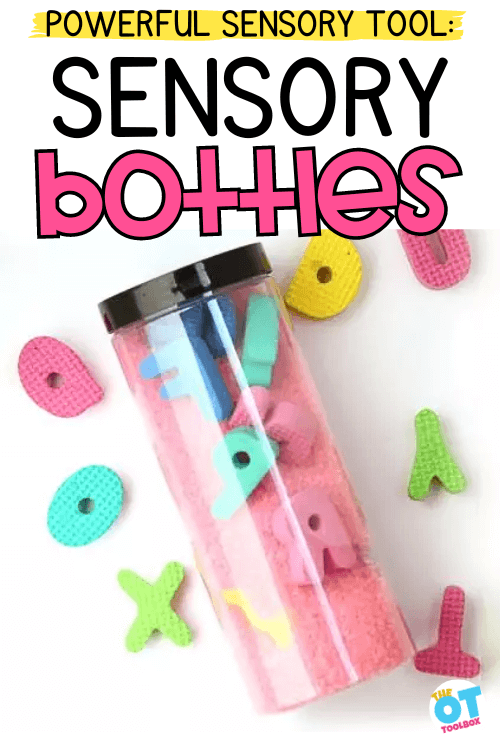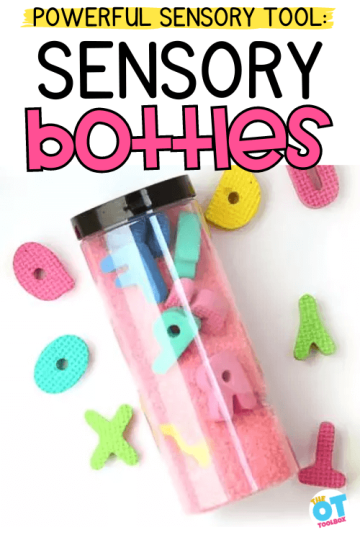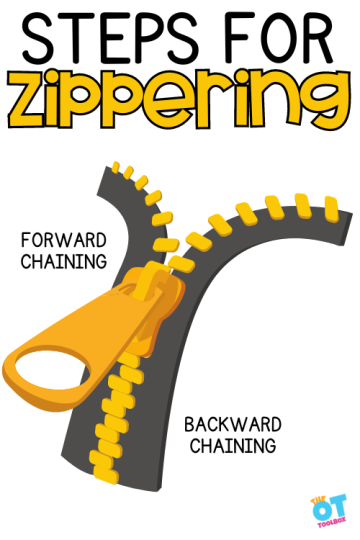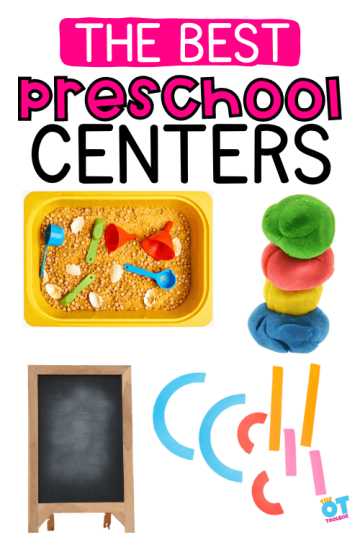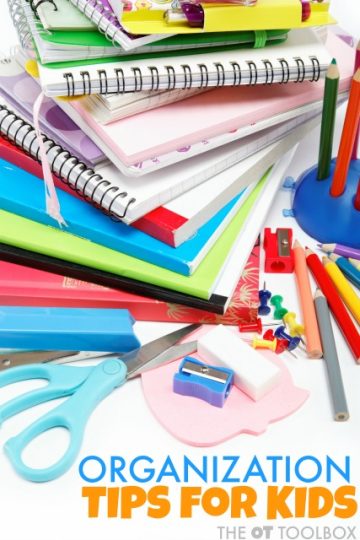A child is over responding to sensory input from the classroom environment. The fluorescent lights are too bright, the janitor is rolling his cart down the hallway, a new pair of socks are too tight, and a fly is buzzing near a window. The combined sensations are too much.
Calm down strategies for school might look different for each student. Also, there are many different reasons why a calm down tool is needed by children in the classroom.
Calm Down Strategies for School
The classroom is an environment that is a place where over-responsiveness can easily interfere with learning, self-confidence, or social emotional development.
Having a toolbox of sensory strategies to address over-responsiveness can be invaluable in the classroom.
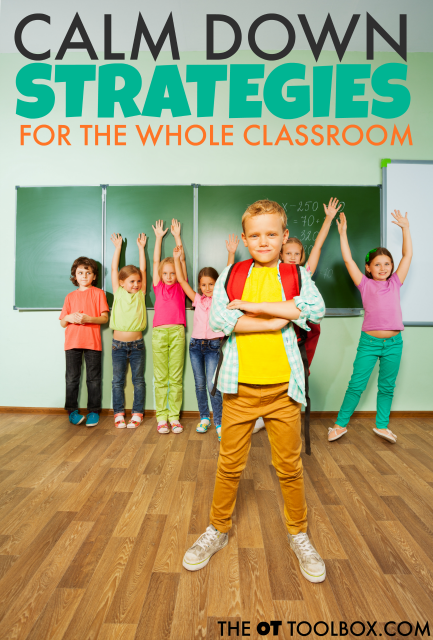
Calm Down Strategies for School
Below are sensory strategies for school that can be used with children who over-respond to sensory input, have difficulties with anxiety, or struggle with attention or executive functioning difficulties. Check out our resource on executive functioning in schools.
A child who needs self-regulation strategies to better learn or function in the classroom can benefit from one or more of these strategies. Every child is different and each will respond in different ways. Not all of these sensory strategies will help every child. Consider underlying issues and consult a school-based occupational therapist for assessment and interventions.
Related Read: Try these free classroom fidget tools and sensory strategies for the classroom.
You’ll also want to check out our resource on back to school sensory activities because the back-to-school transition period is a time when calm down strategies might be needed.
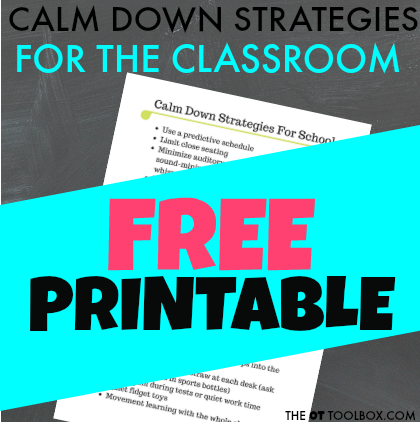
How to help children calm down at school:
Incorporating specific activities into daily school transitions can be a big help. Unpredictable transitions for children are one of the main reasons a tantrum or sensory meltdown may occur. Some of these ideas include:
- Use a predictive schedule
- Limit close seating
- Minimize auditory stimulation (Utilize earbuds, sound-minimizing headphones, white noise, whisper phones)
- Increase space between children
- Movement breaks
- Sensory seating
- Provide a calm down area or sensory safe zone
- Weighted lap blanket or compression garments
- Try tactile tools at the desk
- Decrease visual distractions (trifold, work standing at an easel, single color bulletin boards)
- Use a visual schedule for transitions
- Provide a warning before fire drills or bus evacuation drills
- Plan an accommodation for school-wide assemblies
- Provide a calm down portion of the day build into the schedule with deep breathing and soft music
- Yoga breaks
- Stretches before desk work or tests
- Add wall push-ups or chair push-ups into the daily schedule
- Water bottles with a straw at each desk (ask parents to send in sports bottles)
- Allow gum during tests or quiet work time
- Quiet fidget toys
- Movement learning with the whole classroom
Here are more classroom sensory strategies that may help.
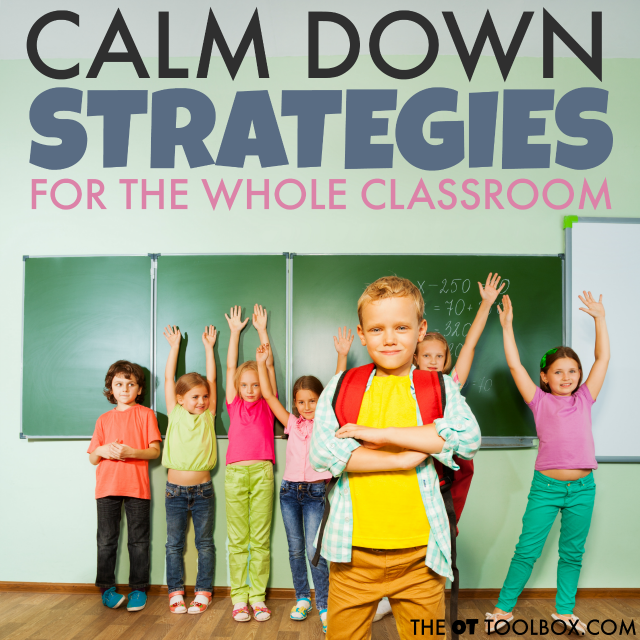
Need more information on sensory processing, grab the Sensory Processing Disorder Handbook below.
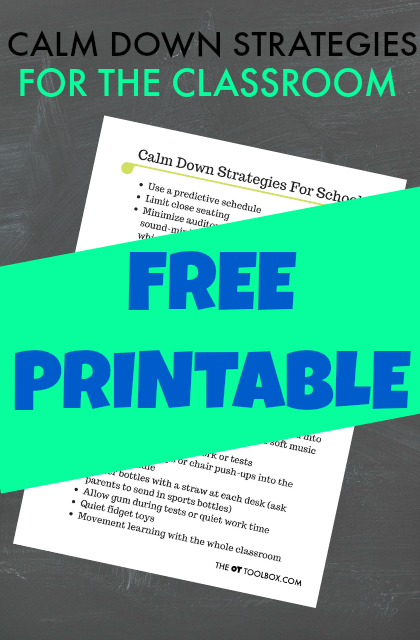

Colleen Beck, OTR/L has been an occupational therapist since 2000, working in school-based, hand therapy, outpatient peds, EI, and SNF. Colleen created The OT Toolbox to inspire therapists, teachers, and parents with easy and fun tools to help children thrive. Read her story about going from an OT making $3/hour (after paying for kids’ childcare) to a full-time OT resource creator for millions of readers. Want to collaborate? Send an email to contact@theottoolbox.com.

